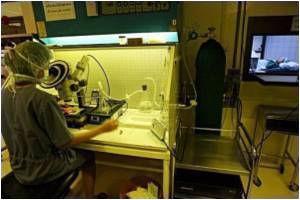A new technology developed by scientists from Taiwan calls for swallowing a diamond to tell what disease you are suffering from.

When coated with special sugars or proteins, the nanodiamonds are absorbed into the body and attach themselves to specific cells.
The study, which is currently limited to animals, could eventually diagnose and eventually treat diseases in humans.
"This research work demonstrates that nanodiamonds are non-toxic in both cellular and organismic levels," Discovery News quoted Yi-Chun Wu, a co-author of the study, as saying.
The nanodiamonds the scientists from Taiwan used absorb yellow light and emit violet light.
Next, the scientists fed two types of nanodiamonds to the round worm C. elegans.
The second batch of nanodiaonds the roundworms ate were coated with a special sugar. Once inside the roundworm, the nanodiamonds passed through the digestive tract and into the body of the worm, congregating at various points inside the body.
The scientists fed the nanodiamonds to the worms just to measure their toxicity and to see where the diamonds ended up.
More specific functions will come soon though, said Vadym Mochalin, a scientist at Drexel University who uses nanodiamonds in his own research.
Virtually any kind of protein or chemical can coat nanodiamonds. When placed into the body, those coated nanodiamonds could seek out and attach themselves to cancer cells, immune cells, pathogens and other cells.
At first, coated and glowing nanodiamonds will likely help doctors and scientists find and map cancers and other things that harm humans.
After that nanodiamonds will likely be used to deliver low doses of powerful drugs to help treat those diseases.
Some researchers are most excited about using nanodiamonds to track stem cells, which could jump-start immune responses, help repair nerve damage, and potentially even regenerate entire organs if the research pans out.
The study has been published in the journal ACS Nano Letters.
Source-ANI
 MEDINDIA
MEDINDIA

![Health Insurance Portability and Accountability Act [HIPAA] Health Insurance Portability and Accountability Act [HIPAA]](https://images.medindia.net/patientinfo/120_100/hipaa.jpg)


 Email
Email




